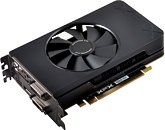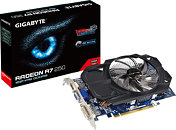
AMD Radeon Graphics Roadmap for 2015 Leaked
It looks like AMD's desktop discrete GPU lineup for 2015 will see a mix of rebrands, re-codename, and one big new chip, all making up the new Radeon R7 300 and R9 300 series. Cards based in this lineup should begin rolling out this month. Leaks from OEMs such as this one, suggest that the first of these should begin rolling out as early as June 16.
The spread is pretty cut and dry. "Hawaii," the chip driving the R9 290 series, will not only get a new codename as "Grenada," but also a seamless rebrand to the R9 390 series, with Grenada Pro making up the R9 390, and Grenada XT making up the R9 390X. One possibility could be AMD taking advantage of low 4 Gbit GDDR5 chip prices to cram 8 GB of standard memory amount, across Grenada's 512-bit wide memory interface. The R9 390X will compete with the GeForce GTX 970, while the R9 390 will offer an option in the vast price and performance gorge between the GTX 960 and GTX 970.
The spread is pretty cut and dry. "Hawaii," the chip driving the R9 290 series, will not only get a new codename as "Grenada," but also a seamless rebrand to the R9 390 series, with Grenada Pro making up the R9 390, and Grenada XT making up the R9 390X. One possibility could be AMD taking advantage of low 4 Gbit GDDR5 chip prices to cram 8 GB of standard memory amount, across Grenada's 512-bit wide memory interface. The R9 390X will compete with the GeForce GTX 970, while the R9 390 will offer an option in the vast price and performance gorge between the GTX 960 and GTX 970.

















